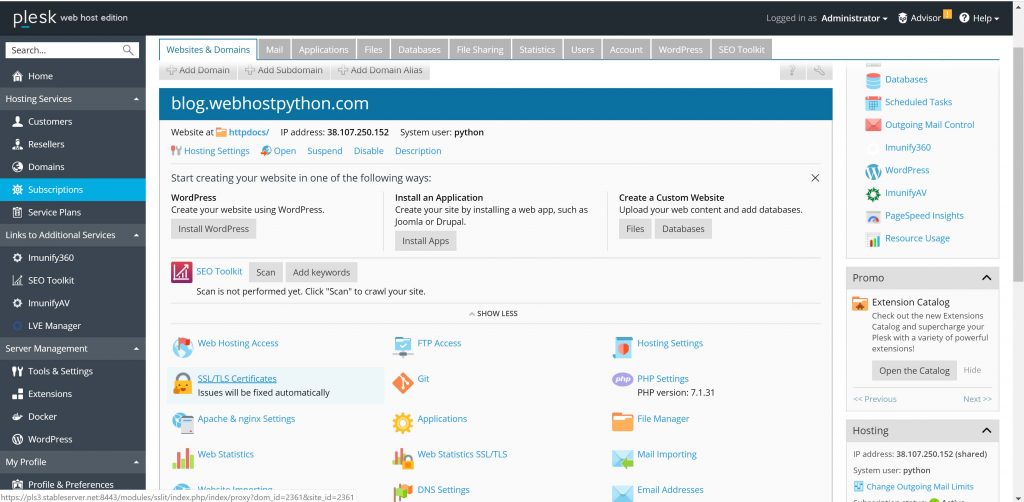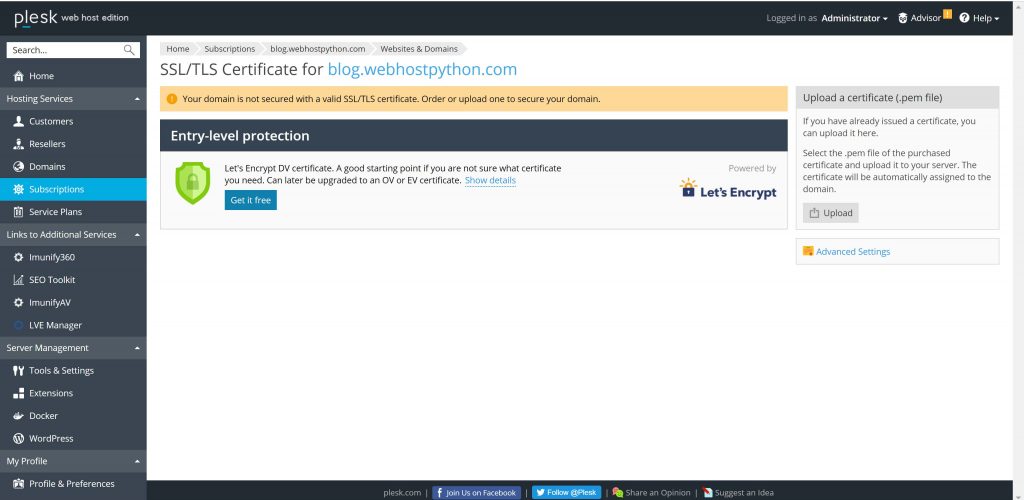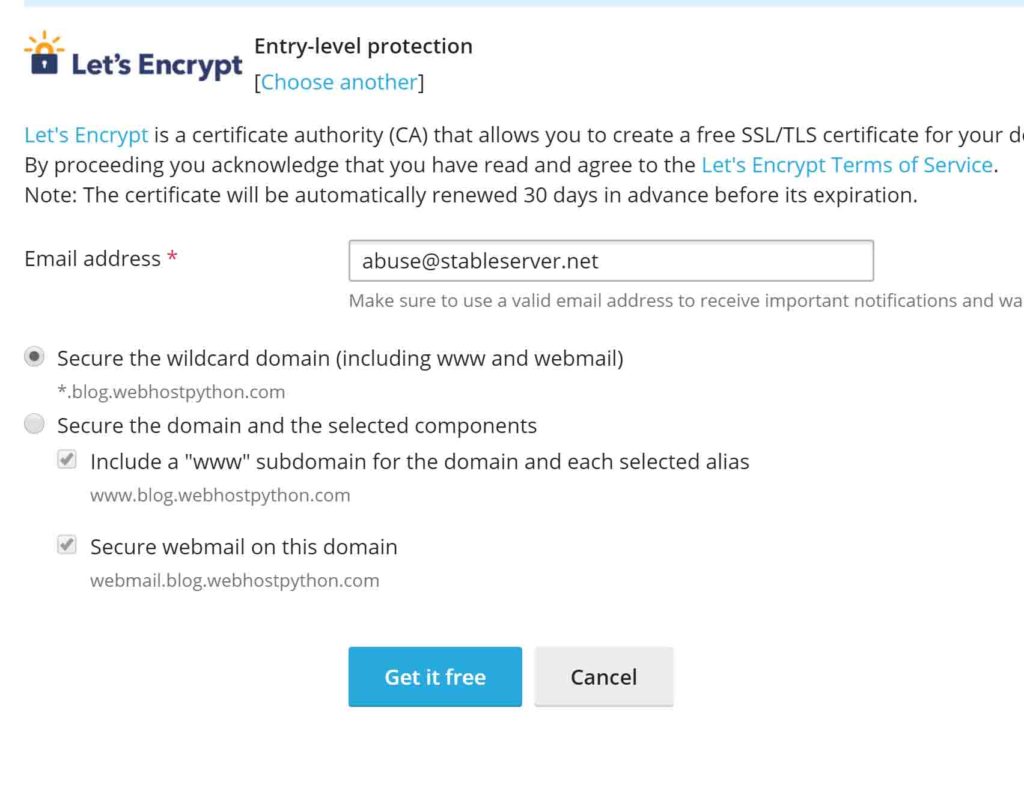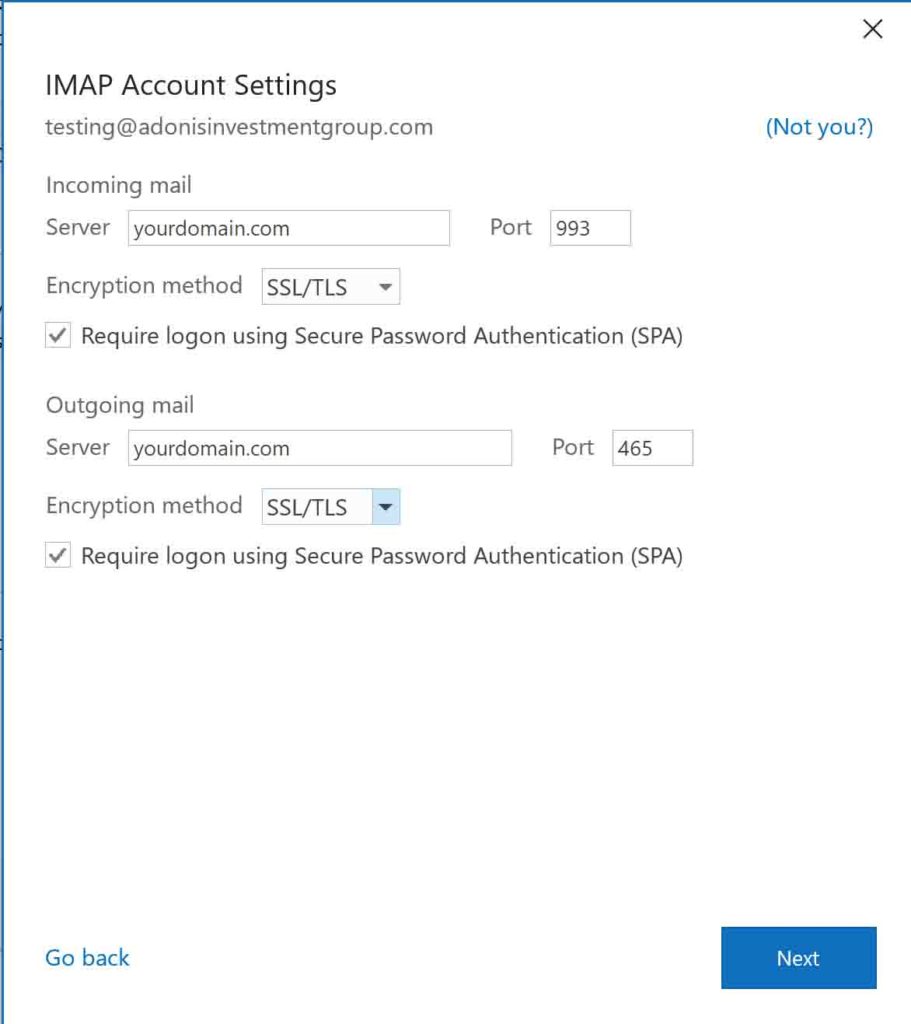Creating an email account is very easy to do in Plesk. However, where people run into trouble is when they want to setup Outlook Thundermail iPhone etc because they don’t know what the appropriate settings are. These are the proper settings you need in your application in order to have email function properly and not give you a ‘Certificate Warning” everytime you go to check your email on your program
The first thing you need to do is make sure you have Wildcard SSL certificates enabled on your subscription.
Enabling Wildcard SSL
From the home page of your domain/subscription, click on SSL/TLS Certificates

Then, click Get it Free

Then select “Secure the wildcard domain (including www and webmail) ” and click on Get it Free

After doing that, you’ve completed the SSL part of these steps. On the next screen you may see “Reload or cancel”. Simply click reload.
Enabling SNI on your email account in Plesk
Now you need to let Plesk know to read your SSL certificates for email.
In your panels home page, click on “Mail” and then “mail settings”. This is the important step! Select your SSL certificates from the drop down for ” SSL/TLS certificate for mail “

hen click “Ok” and now you’re done! So you’ve now enabled SNI on your email accounts, and also generated the proper SSL certificate for it so your email programs won’t give you errors about invalid certificates.
Lastly, these are the settings you need to use. This applies to any email program you’re using. Replace “yourdomain.com” with the name of your domain of course.

So to be clear:
Incoming mail server: yourdomain.com
Incoming mail server port: 993 (Enable Secure Password Authentication and SSL/TLS)
outgoing mail server: yourdomain.com
outgoing mail server port: 465 (Enable Secure Password Authentication and SSL/TLS)
These settings will work on any domain of yours if you have done all of the above steps. In certain cases, you may be able to even use “mail.yourdomain.com” but if that gives you errors, simply go back to using the format mentioned above “yourdomain.com”

